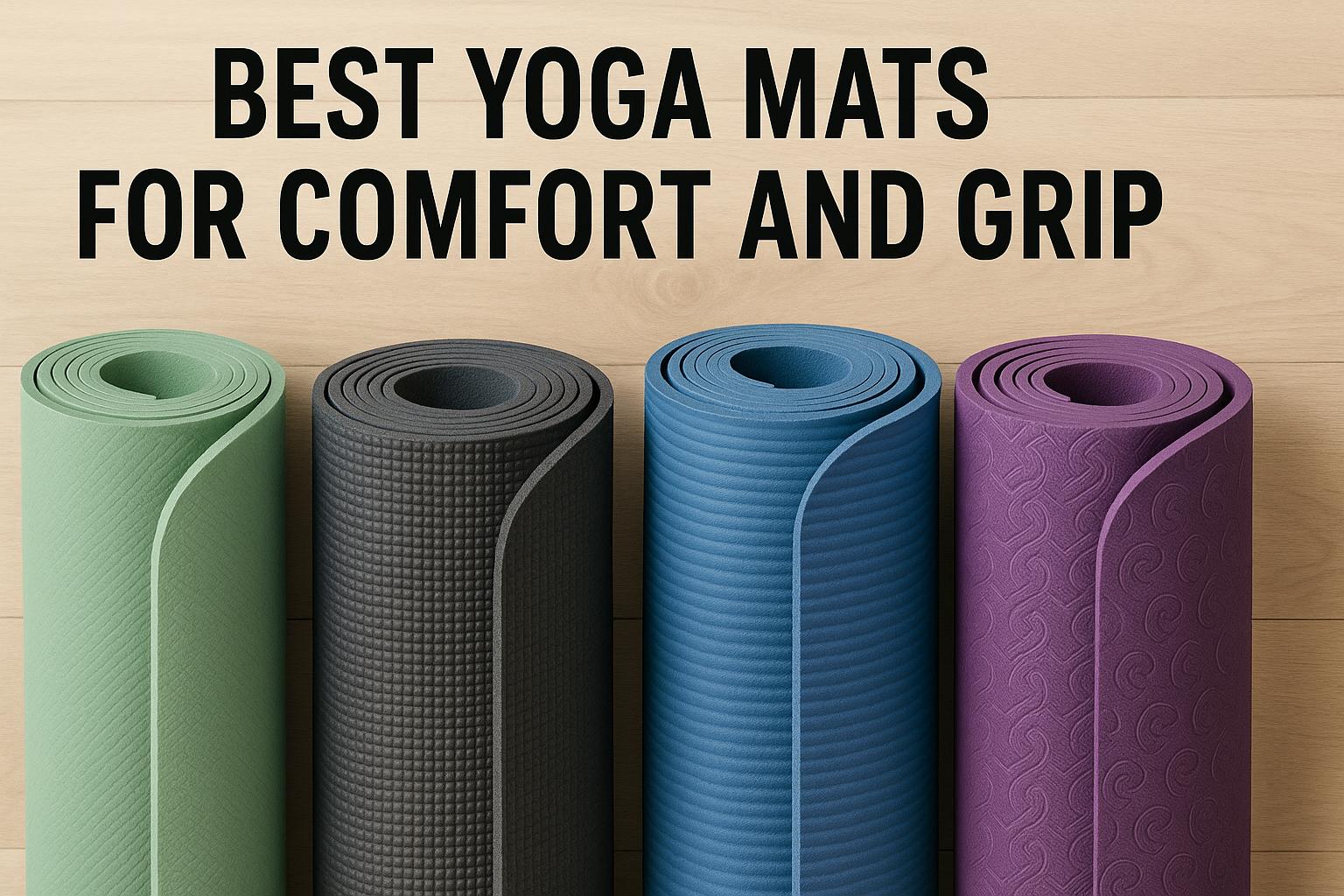Introduction
Practicing yoga is a holistic activity that not only aids in enhancing physical postures but also fosters mental tranquility. While the focus often lies on mastering the poses and breath control, the choice of a yoga mat can significantly impact your overall experience. A yoga mat that provides the right combination of comfort and grip can elevate your practice, making each session more productive and enjoyable. Choosing a suitable yoga mat involves delving into factors such as material, thickness, texture, and durability. This guide aims to help you navigate these aspects, ensuring you make an informed decision that enhances your yoga routine.
Material Considerations
The material of your yoga mat determines its texture, grip, and overall feel underfoot. Each material option presents its own set of attributes and considerations that can impact your yoga practice:
- PVC (Polyvinyl Chloride): Known for its robustness, PVC mats offer excellent durability. The material lends itself to a sticky surface that effectively grips the floor, keeping you stable during complex poses. While it provides a strong grip, it’s worth noting that PVC mats are less eco-friendly.
- TPE (Thermoplastic Elastomer): TPE mats are an environmentally friendlier alternative to PVC, balancing grip and comfort effectively. They usually contain no latex or PVC, making them a safer choice for practitioners with allergies. These mats are also lightweight, convenient for yogis on the move.
- Natural Rubber: Renowned for its superb traction and cushioning, natural rubber offers a firm grip that doesn’t slip, even during intensive practices. However, as it contains latex, it might not be suitable for those with latex sensitivities.
- Cork: Cork mats have a distinctive texture that becomes even more grippy when damp, offering exceptional stability. Moreover, cork is a sustainable resource, making these mats an environment-conscious choice.
- Jute: Jute mats exude a natural appearance, blending with eco-friendly yoga ethos. While their coarse texture mirrors nature, it occasionally compromises on softness and grip compared to other materials.
Thickness and Cushioning
The thickness of a yoga mat is essential to the comfort level it delivers, directly affecting your practice:
- Thin Mats (1/16 inch): These mats cater to practitioners who prefer a pronounced connection to the floor. When engaging in balance-focused poses, thin mats offer vital stability, allowing for improved posture control.
- Standard Mats (1/8 inch): The standard thickness is a versatile option that provides just enough cushioning while maintaining stability. It’s suitable for most yoga styles, appealing to a wide range of practitioners looking for a balanced experience.
- Thick Mats (1/4 inch or more): Mats of greater thickness are ideal for those needing extra cushioning for joints, particularly during prolonged pose holds or if joint protection is a priority due to sensitivity or previous injuries.
Texture and Grip
A yoga mat’s texture is crucial in preventing slips and ensuring a solid grip. This aspect can vary notably based on material and design:
- Textured Surfaces: Mats featuring additional ridges or patterns enhance grip, effectively minimizing slipping during demanding yoga poses. These surfaces are well-suited for dynamic or hot yoga practices, where maintaining stability is essential.
- Smooth Surfaces: For slower-paced practices or meditative yoga, smooth surface mats provide a soft feel. However, they might require extra focus to maintain balance during swift movements.
Durability and Maintenance
A yoga mat’s lifespan depends significantly on its material’s quality and the care it receives:
To ensure your mat retains its integrity and grip, incorporate regular cleaning in your routine. Most mats can be wiped with a solution of water and mild soap or a specific gentle cleaner. Proper maintenance not only prolongs the mat’s functionality but also ensures hygienic conditions, essential for a health-focused practice.
Longevity
Regular inspection can forewarn any signs of wear and tear, allowing for timely replacement or maintenance actions. Materials like PVC and TPE are known for their durability, often outlasting other options. Conversely, natural materials may require more frequent replacement, though they often align better with eco-conscious values.
Conclusion
In choosing a yoga mat that meets both comfort and grip needs, it’s essential to assess your practice style and personal preferences. Balance material benefits against eco-conscious choices, consider the appropriate thickness for your comfort, ensure the texture suits your practice intensity, and commit to regular maintenance for longevity. Thoughtful selection of these elements will undoubtedly enhance your yoga journey, providing a stable, comfortable foundation for growth in your practice. The ultimate aim is a harmonious balance between stability, comfort, and sustainability, aligning your yoga mat choice with both your physical needs and environmental consciousness.




